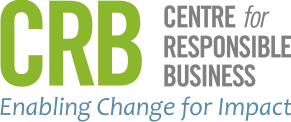In the aftermath of the discussions at COP 26 at Glasgow, and in light of the latest findings of the Intergovernmental Panel on Climate Change which states – “unless there are immediate, rapid and large-scale reductions in greenhouse gas emissions, limiting warming to close to 1.5 °C or even 2 °C will be beyond reach”, there is only one direction the talks and actions can go forward from here. The pace of transition will have to be faster. It is all about the pace of action in the risk and opportunity landscape that is evolving.
As the financial sector gets wary of the risk of its investments through this period of transition[1], there will be more pressure on companies. There is a turbo charge happening to climate finance which is resulting in the falling cost of capital to green investments and that should be the added driver for business. The lack of clarity of future technology pathways of low carbon or Net-Zero should be treated as an opportunity that is open for all.
While climate change is the biggest business risk, it is also the biggest commercial opportunity that we would not have seen in the past. It is important to comprehend the risk and opportunity landscape to chalk out the way forward. The PG&E episode is an eye opener on how risk can precipitate due to climate change[2]. The tiny beetles which were one of the reasons for this episode are thriving as climate change warms winters. Now the beetles are posing a severe threat to the timber industry across North America and Europe[3].
Alternates for conventional business can come from unlikely quarters. Who would have thought of Ola as a competitor for TVS, about 2 years back? While speaking to somebody in the cement business, I was telling him that alternate binding materials or construction alternatives that result in low carbon emissions are potential competitions for them. There is no comfort in the tag of “Hard to Abate” sector. Rather, that should be the focus and the impact could be dramatic. Apple paved way to bring in rival giants Alcoa and Rio Tinto together to produce the first ever carbon free aluminum[4]. The potential of a future downside and an early mover advantage to exploit the opportunity will help initiate the right collaborations.
It is not just about activism, reputation, goodwill and the resulting focus on communication anymore. The change is real and up-close, and there is a pressing need to foster a more rapid change. According to the latest report by CDP, 39 listed Indian companies have estimated the financial impact of reported climate-related risk to the tune of INR 7.13 billion[5]. That is just 39 companies who monetized the risk and accounted for the impact of known risks. The Deloitte Economics Institute study indicates that India has the potential of losing US$35 trillion over the next 50 years due to unmitigated climate change. The same report also showcases an opportunity of US$11 trillion in economic value during the same period[6].
It is time to factor in climate risk to the companies’ risk registers. This requires inputs of probable scenarios and an extensive coverage of the value chain to identify potential risks. An opportunity not capitalized is also a risk. I think it was Victor Hugo who said “Nothing can stop an idea whose time has come”. More than an idea it is the urgency to act. There is no time to wait and watch anymore, the race is on.













































































































